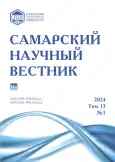Коммунистическое движение в Нге-Тинь и политические партии во Французском Индокитае (1930–1931 гг.)
- Авторы: Лёзин А.И.1
-
Учреждения:
- Самарский государственный социально-педагогический университет
- Выпуск: Том 13, № 1 (2024)
- Страницы: 96-99
- Раздел: Исторические науки
- URL: https://journals.rcsi.science/2309-4370/article/view/263419
- DOI: https://doi.org/10.55355/snv2024131204
- ID: 263419
Цитировать
Полный текст
Аннотация
В статье анализируется опыт Французской колониальной империи 1930-х гг. по обеспечению внутренней безопасности в Индокитайском регионе. Рассматриваются социальные, экономические и климатические причины политических волнений (1930–1931 гг.) в северной части Аннама, а именно в двух провинциях Нгеан и Хатинь (Нге-Тинь). Даётся характеристика трёх идеологических направлений, характерных для политических партий Индокитая. Показано развитие крестьянского движения, создание альтернативных администраций в деревнях взамен колониальных. Новым учреждением для ряда деревень должны были стать советы под руководством Коммунистической партии Индокитая. Отражён взгляд колониальной администрации Индокитая на социально-экономические проблемы. Представлены корректировки во французской колониальной армии в виде отправки дополнительного контингента, как в случае с прибытием 4-го батальона Иностранного легиона из Алжира в Индокитай. Основное внимание уделяется ключевому источнику для изучения заявленной проблемы: «Вклад в историю политических движений во Французском Индокитае». Он свидетельствует о победном переломе для французской администрации в подавлении вооружённых восстаний на территории Индокитая. Документ является стенограммой и представляет собой показания вьетнамцев, которые состояли в Коммунистической партии Индокитая. Установлено, что, несмотря на сложности для Франции в области поддержания внутренней безопасности в индокитайском регионе к 1931 г., порядок в колонии на данном этапе был в основном восстановлен.
Полный текст
Открыть статью на сайте журналаОб авторах
Александр Иванович Лёзин
Самарский государственный социально-педагогический университет
Автор, ответственный за переписку.
Email: lezin1995@gmail.com
магистрант кафедры всеобщей истории, права и методики обучения
Россия, г. СамараСписок литературы
- Thomas M. Albert Sarraut, French colonial development, and the communist threat, 1919–1930 // The Journal of Modern History. 2005. Vol. 77, № 4. P. 917–955. doi: 10.1086/499830.
- Goscha C.E. Thailand and the Southeast Asian networks of the Vietnamese revolution, 1885–1954. London; New York: Routledge, 2016. 418 p.
- Новакова О.В. Об истории зарождения коммунистического движения во Вьетнаме // Вьетнамские исследования: электронный научный журнал. 2018. Т. 2, № 1. С. 105–122.
- Усов И.В. Идеологическая дискуссия между КПИК и вьетнамскими троцкистами в начале 1930-х гг. // Вестник Российского университета дружбы народов. Серия: Всеобщая история. 2012. № 3. С. 36–48.
- Colonial Armies in Southeast Asia / ed. by K. Hack, T. Rettig. London; New York: Routledge, 2005. 327 p.
- Thomas M. Violence and colonial order police, workers and protest in the European Colonial Empires, 1918–1940. Cambridge: Cambridge University Press, 2012. 527 p.
- Pre-communist Indochina / ed. by B. Williams. London; New York: Routledge, 2014. 189 p.
- Long N.V. The Indochinese communist party and peasant rebellion in Central Vietnam, 1930–1931 // Bulletin of Concerned Asian Scholars. 1978. Vol. 10, № 4. P. 15–35.
- Duiker W.J. The Red Soviets of Nghe-Tinh: an early communist rebellion in Vietnam // Journal of Southeast Asian Studies. 1973. Vol. 4, № 2. P. 186–198.
- Guerre et terreur aux colonies. Soutenons le prolétariat de Chine et d’Indochine. 1931 // Archives nationales. Cotes: F/7/13126, dossier n°9.
- Bradley M. Vietnam at war. Oxford: Oxford University Press, 2009. 233 p.
- Bone J.A. Rice, Rubber, and Development Policies: The «mise en valeur» of French Indochina on the Eve of the Second World War // Proceedings of the Meeting of the French Colonial Historical Society. 1992. Vol. 16. P. 154–180.
- Thomas M. Fighting «Communist Banditry» in French Vietnam: the rhetoric of repression after the Yen Bay Uprising, 1930–1932 // French Historical Studies. 2011. Vol. 34, № 4. P. 611–648.
- Discours prononcé par Monsieur Pierre Pasquier, gouverneur général de l’Indochine, à l’ouverture de la session du conseil de gouvernement le 8 décembre 1931. Saigon: Imprimerie de la «Depeche» 25–27, line Calinat, 1931. 24 p.
- The Character and Power of the Viet Minh. Part I. Vietnam and the U.S., 1940–1950 // United States – Vietnam relations 1945–1967. Pentagon Papers. National Archives and Records Administration. RG 330. 73 p.
- Rapports au Grand Conseil des interets economiques et financiers et au conseil de gouvernement. Session ordinaire de 1931. Fonctionnement des divers Services Indochinois. Hanoï: Imprimerie d’extreme-orient, 1931. 803 p.
- Histoire militaire de l’Indochine française des débuts à nos jours. Т. 2. Hanoï-Haïphong: Imprimerie d’extreme-orient, 1930. 310 p.
- Rapports au Grand Conseil des interets economiques et financiers et au conseil de gouvernement. Session ordinaire de 1932. Fonctionnement des divers Services Indochinois. Hanoï: Imprimerie d’extreme-orient, 1932. 381 p.
- Contribution à l’histoire des mouvements politiques de l’Indochine française. La terreur rouge en Annam, 1930–1931. Gouvernement général de l’Indochine. Direction des affaires politiques et de la Sûreté générale, 1934. Vol. 5. 170 p.
- Усов И.В. Визит Рабочей делегации по расследованию положения дел в колонии под руководством г. Пери в Индокитай в 1934 году и его влияние на последующее развитие вьетнамского национально-освободительного движения // Вьетнамские исследования. 2012. № 2. С. 296–308.
- Dommen A.J. The Indochinese experience of the French and the Americans: nationalism and communism in Cambodia, Laos, and Vietnam. Bloomington: Indiana University Press, 2001. 1173 p.
Дополнительные файлы






